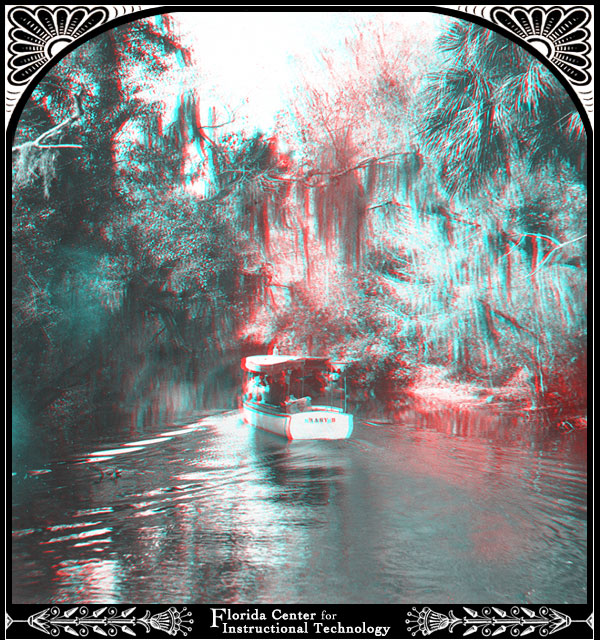| Home > Florida in 3D > Florida Way of Life > Recreation > Anclote River | |

Luxuriant tropical verdure on the Anclote River, Florida. "The Everglade State," as Florida is often called, has had a checkered but always romantic history since the day in 1513 when Ponce de Leon discovered the flowery peninsula while on his search for the "fountain of perpetual youth," and laid claim to it in the name of Spain. Fought over by Spaniards, French, English, and Americans, it finally became a domain of the United States by purchase in 1821. At that time it had 600 white inhabitants. Nearly a century later, in 1910, the population had only increased to three-quarters of a million. But in the sixteen years between 1910 and 1926, Florida became suddenly so popular as the ideal winter resort for the eastern seaboard that the number of its people nearly doubled, reaching over 1,300,000. The two largest cities, Jacksonville and Tampa, now have about 100,000 people each, Miami claims about 75,000, and a number of other seaside resorts have between 10,000 and 30,000 people.
Yet for all its deserved reputation as a winter resort, nearly two-thirds of Florida's people still live in rural districts. Here, besides great crops of staple products and of garden vegetables for the winter markets of the North, are produced enormous quantities of sub-tropical fruits of which the most important are oranges and grapefruit. Nevertheless, the greater part of Florida's area remains covered with virgin forests and everglades such as Ponce de Leon found there and it is the beauty of these semi-tropical fastnesses, of which the scene before us furnishes an attractive example, that constitutes the greatest charm of the state. |
|||
Photographer: | Unknown | Date: | Unknown |
Publisher & City: | Keystone View Company: Meadville, Pa., New York, NY., Chicago, Ill., London, England | ||
Series & Number: | 29583 | ||
| Home > Florida in 3D > Florida Way of Life > Recreation > Anclote River |
Exploring
Florida: Social Studies Resources for Students and Teachers
Produced by the Florida Center for Instructional
Technology,
College of Education, University of South Florida © 2008.